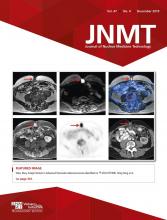Abstract
The Health Insurance Portability and Accountability Act (HIPAA) of 1996 has made an impact on the operation of health-care organizations. HIPAA includes 5 titles, and its regulations are complex. Many are familiar with the HIPAA aspects that address protection of the privacy and security of patients’ medical records. There are new rules to HIPAA that address the implementation of electronic medical records. HIPAA provides rules for protected health information (PHI) and what should be protected and secured. The privacy rule regulates the use and disclosure of PHI and sets standards that an entity working with health data must follow to protect patients’ private medical information. The HIPAA security rule complements the privacy rule and requires entities to implement physical, technical, and administrative safeguards to protect the privacy of PHI. This article—part 1 of a 2-part series—is a refresher on HIPAA, its history, its rules, its implications, and the role that imaging professionals play.
Footnotes
Published online Jun. 10, 2019.
CE credit: For CE credit, you can access the test for this article, as well as additional JNMT CE tests, online at https://www.snmmilearningcenter.org. Complete the test online no later than December 2022. Your online test will be scored immediately. You may make 3 attempts to pass the test and must answer 80% of the questions correctly to receive 1.0 CEH (Continuing Education Hour) credit. SNMMI members will have their CEH credit added to their VOICE transcript automatically; nonmembers will be able to print out a CE certificate upon successfully completing the test. The online test is free to SNMMI members; nonmembers must pay $15.00 by credit card when logging onto the website to take the test.







